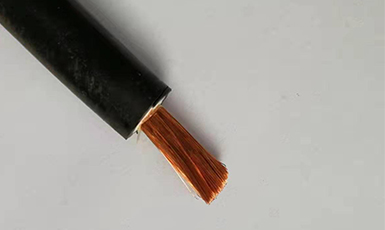

1. Common flame retardant wire and cable
Ordinary flame retardant wire and cable insulation and sheath materials are generally halogenated (or halogenated flame retardant modified) polymer materials, the most commonly used polyvinyl chloride (PVC) materials. Common PVC resin has higher electrical insulation, resistance to chemical corrosion, wear resistance, aging resistance, excellent performance, low price characteristics of China's current largest cable materials use raw materials, but the combustion of PVC will release hydrogen chloride, carbon monoxide, carbon dioxide, various aromatic hydrocarbons, chlorine compounds and other toxic and harmful gases.
2. Low smoke and flame retardant wire and cable
Inorganic hydroxide flame retardants such as aluminum hydroxide and magnesium hydroxide can be added to the insulation and sheath materials of low-smoke flame retardant wire and cable. The flame retardant principle is condensation phase flame retardant principle: aluminum hydroxide, magnesium hydroxide thermal decomposition to release water, while absorbing heat, reduce the actual temperature of insulation and sheath materials, inhibit the decomposition of materials, release combustible gas. The metal oxide produced is a refractory material, which can be covered on the surface of the material to improve the fire resistance of insulation and sheath, which can isolate air and prevent combustion.
3. Low smoke, halogen-free and flame retardant wire and cable
Low smoke halogen-free flame retardant wire and cable insulation and sheath materials are mostly thermoplastic elastomer materials, do not contain chlorine, bromine, iodine and other halogen elements. In the production process, mercury, chromium, cadmium, lead and other heavy metal elements that cause great pollution to the environment are excluded, and polyamide is often used. The flame retardant mechanism of the cable is the intermittent exchange flame retardant mechanism. The discontinuous exchange of flame retardant means that some heat is dissipated when the flame retardant material burns, so that the material can not maintain the thermal decomposition temperature, and therefore can not continue to produce combustible gas, so the combustion self-extinguishing.
Fluoroplastic flame retardant wire and cable
Fluoroplastic flame retardant wire and cable has flame retardant property because of its special chemical structure. This material does not need modification or flame retardant treatment, with high temperature resistance, oxidation resistance, non-combustible, high oxygen index, self-extinguishing and other characteristics.

Enterprise qr code

Website qr code